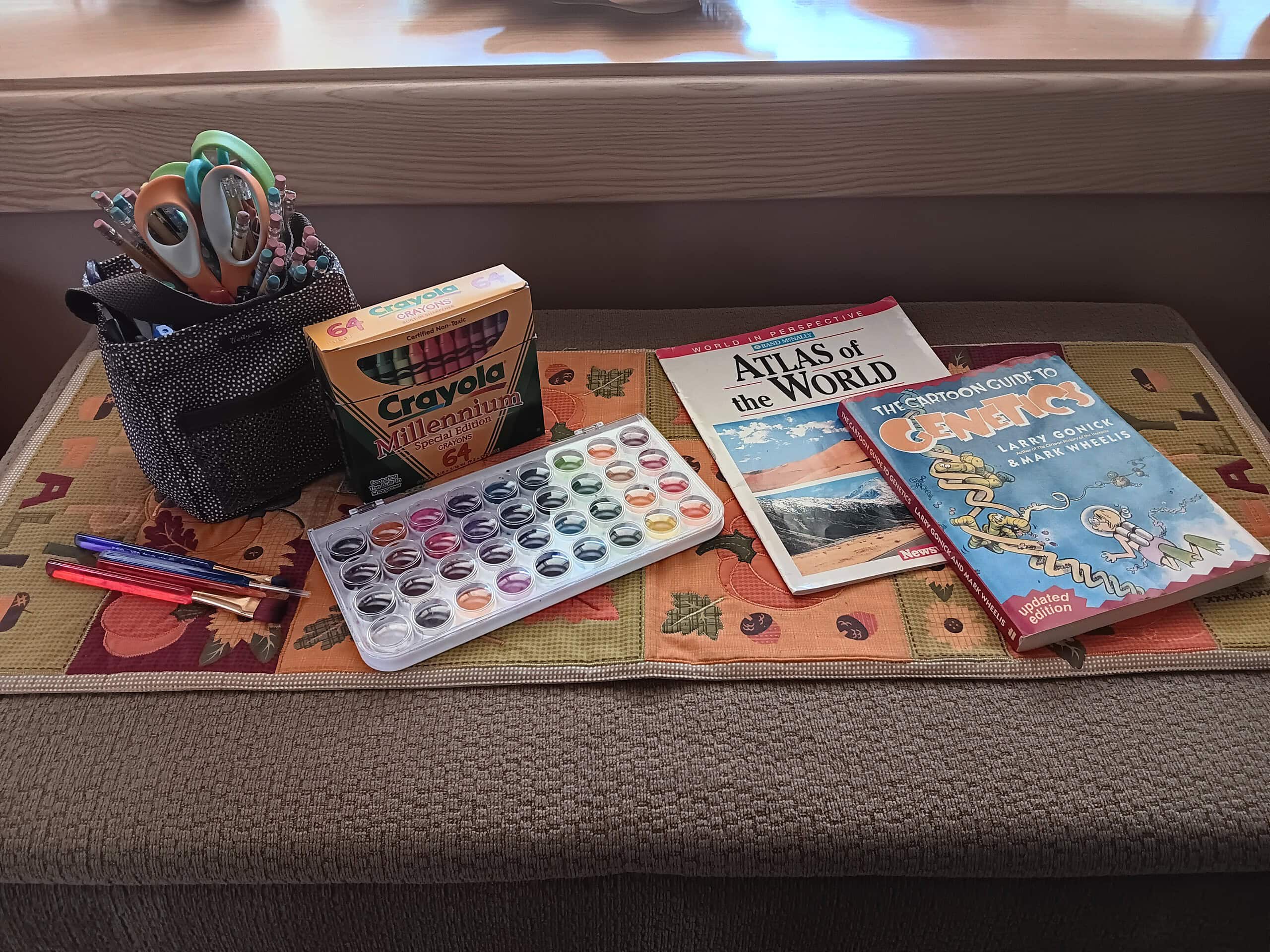Strewing: Spark Curiosity & Self-Directed Learning
Strewing. I remember hearing that word when first exploring self-directed learning and thinking, “What on Earth does that mean?”
I was a late arrival to the unschooling party and spent an entire summer trying to figure out how we were going to dive into this new way of learning.
Terms like strewing and deschooling initially brought me a great deal of anxiety, but that does not need to be the case for you!
What Is Strewing and Why It Matters
Strewing is the intentional act of placing items or resources around in order to spark curiosity and encourage learning. The goal is provide items or resources that align with your child’s interests and therefore, invite them to learn.
Strewing is not about forcing curriculum, ideas, and skills that you see as important or necessary.
There is no pressure or expectations in strewing. Sometimes you will find that your child has no interest at all in what you have provided and that is TOTALLY OKAY.
Maybe that item or resource was not the right fit. Or maybe you set it out at a later date and it is. Either way, it’s all good.
Believed to be coined by unschooling diva, Sandra Dodd, who first used the term in the 1990’s, strewing has proven to support curiosity, creativity, and independent learning—-the hallmarks of self-directed learning.
The Philosophy Behind Strewing (And How it Inspires Self-Directed Learning)
The idea behind strewing is to foster a love of learning in a non-threatening way through invitation and discovery.
Since items and resources are presented without explicit introduction or direction, children can explore without expectation and solely based on interest. From this, organic learning opportunities that spark curioisty and are intrinsically motivated, drive the process.
This is the key to self-directed learning that is more enjoyable, more authentic, and vastly more meaningful.
What Strewing Looks Like in Real Life
So what does strewing look like? Strewing looks like leaving out books, puzzles, blocks, art supplies, etc., whatever you believe your child may have an interest in or desire to learn about. Consequently, strewing involves observing your child’s interest and then following through with materials that reflect that interest.
Strewing is never about forcing. I can’t stress this enough. Strewing, and consequently, unschooling, is never about forcing an idea, skill, or curriculum. It is not about ticking off standards set by traditional schools.
It’s about sparking natural curiosity and engagement through self-directed learning.
One thing I have learned over the years on this unschooling path is that strewing looks different at various age, interest, and ability levels.
How to Start Strewing in Your Home
- Practical tips for beginners:
- Choose a clutter-free space
- Rotate items regularly
- Follow your child’s current interests
- Start small and observe your child’s responses
- Mistakes to avoid:
- Overloading the space
- Directing the activity
- Making it feel like school
- Interrupting the discovery process
- Having specific expectations
What to Strew — Ideas by Category
- STEM: science kits, magnets, measuring tools, wooden sticks, cardboard tubes or boxes, tape
- Arts & Crafts: watercolor paints, modeling clay, markers, crayons, various types of paper
- Literacy: graphic novels, maps, biographies, blank journals, informational texts, picture books, chapter books
- Nature: shells, nature guides, binoculars, bug catchers, leaves, flowers
- Everyday Life: recipes, old tech gadgets, DIY kits, board games
Please note this is a VERY limited list. The ideas for strewing are truly limitless and dependent upon your child’s interests!
Strewing and the Unschooling Lifestyle
Unschooling is a lifestyle. It’s a way of living and learning that promotes independence and self-motivation. Strewing fits seemlessly into that.
As a traditonal homeschooler before transitioning to self-directed learning, I focused on planning and executing the perfect lessons for my son, just as I had when I worked in traditonal classrooms.
But with unschooling, the focus is on observing and responding, not planning. Its about watching what sparks curiosity and JOY in your child and then running with that.
I won’t lie to you and tell you that unschooling and all that comes with it, like strewing and facilitating, is easy. It isn’t.
As the guide, you must be in tune with your child and always thinking about what you can provide that may (or may not!) spark that interest.
And sometimes what you think will be the real hum-dinger, turns out to be of no interest at all. And that’s okay! Keep trying different ideas.
Sometimes you can even circle back to ideas that you tried before and failed. You may see a different reaction…..you may not. It’s all good.
Trust the process. Trust your gut. You know your child best!
Conclusion: Let Curiosity Lead the Way
Remember, strewing is about inviting your child to learn-NOT instructing-him or her. It’s about allowing curiosity to drive the desire to learn more. This is what promotes a love of learning, independence, and self-motivation. Who doesn’t want all of those things for their child?
Call to action: Try one strewing idea this week. What will you choose?
